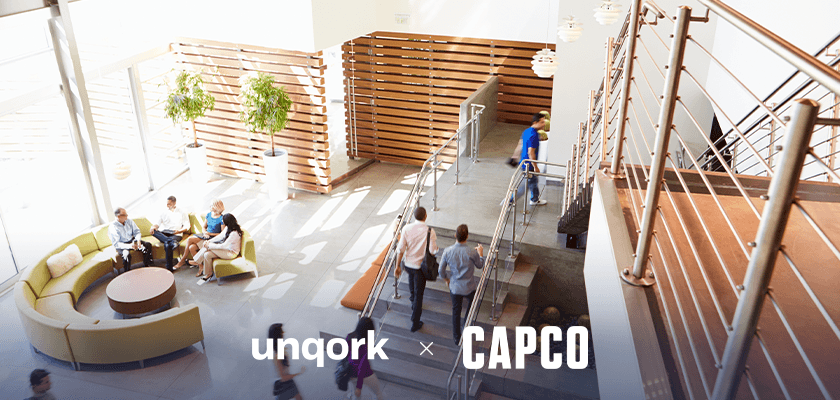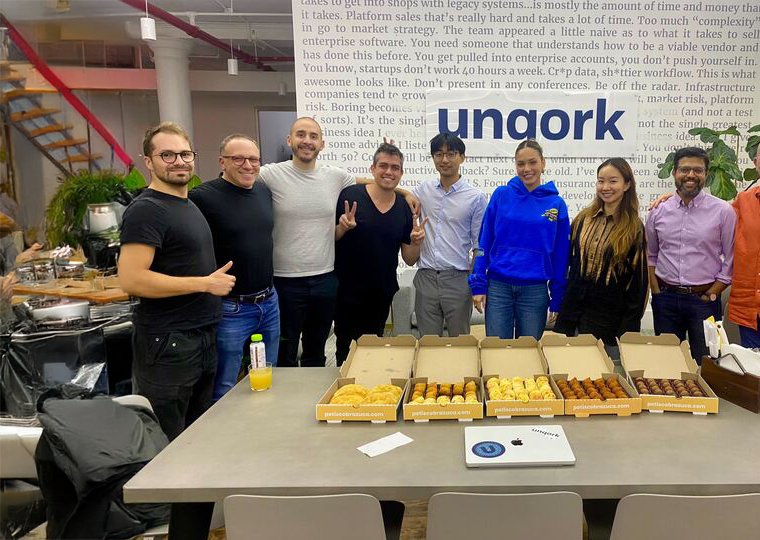Capco and Unqork are helping companies responsibly adapt their workforce to the new normal.
To efficiently and responsibly manage worksite reopenings, business leaders must take an approach that is data-driven, flexible, and human-centric—this is where the partnership between Capco and Unqork has been uniquely impactful.
Capco comes with two decades of experience helping clients transform their businesses, capitalize on digital opportunities, increase revenue, manage risk and regulatory change.
Unqork’s enterprise no-code platform empowers organizations to rapidly build and effectively manage robust digital solutions in some of the world’s most complex and heavily regulated sectors. Together these two companies can help enterprises navigate the unprecedented complexities of the pandemic era.
The partnership was the subject of a recent webinar featuring thought leaders from both organizations, including Unqork’s Christian Barrera (VP of Alliances and Ecosystem) and Kara Dennis (Head of Healthcare), as well as Capco’s Colby Lennon (Senior Management Consultant, Digital Transformation and Strategy) and Nic Parmaksizian (Head of Digital). The webinar explored how the two companies can help organizations become truly resilient.
Watch the replay of the webinar above to learn more about how we can help you adapt to the new normal.
“One of the important things Unqork offers is the acceleration to market. This has been critical during COVID, as organizations have needed to respond quickly and stand up applications,” explained Kara Dennis. “This is something we were able to demonstrate with our very first workforce resilience application, which we were able to set up in three weeks.”
“We support our clients across a variety of problems, issues, and transformation ambitions ranging from strategic cost-related issues they might be facing to driving their digital transformation,” added Nic Parmaksizian. “And I think the last year at the height of the pandemic, really was when the partnership with Unqork really came to life.”
Navigating the New Normal
The partnership empowers companies to reopen worksites and adapt to new pandemic conditions while mitigating risk and keeping workers’ wellbeing as a central guiding principle. All resilience initiatives focus on four key components:
1. Objectively evaluate risk levels across offices and guide decisions on office reopening using several critical types of data:
-
Regional COVID-19 incidence and transmission rates
-
National & local government reopening guidelines for employers (e.g., office capacity thresholds, PPE requirements)
-
Availability of regional tools to prevent the spread of disease, including contact tracing and testing
“One thing we learned early on in the pandemic was the need to set up systems that ingest data from a variety of different sources, so we can identify robust indicators of safety and provide global decision-makers with quantifiable risk levels in any given locality or country,” explained Kara. “We set up systems that allowed our clients to take in various forms of objective data that could give executives a sense for what the risk level would be if they were to reopen a particular office.”
2. Reevaluate office-level risk on an ongoing basis and cascade updates through policies and implementation plans. As conditions are quickly evolving, the system must help decision-makers rapidly identify changes as they happen and provide them with the ability to cascade changes via seamless integrations into various internal and external systems (e.g., HR, facilities management, etc.)
3. Manage implementation of return-to-office strategies through clear lines of communications with employees. This includes user-friendly employee-facing hubs for self-reporting relevant information (e.g., health status, recent travel, and workspaces/colleagues they have been in contact with), disseminating targeted communications to subpopulations of employees (e.g., those who have potentially been exposed to COVID-19), and supporting contact-tracing processes.
“When we think about workforce resilience, we’re really talking about the wellbeing of employees in this new world.” — Nic Parmaksizian, Head of Digital, Capco
“We needed a set of implementation tools that were user friendly and navigable for employees. So they needed to have tangible tools that would enable them to report on health status and be approved for office re-entry,” Kara explained. “In a matter of weeks, we set up a system that enabled employees to not only understand what was expected of them but to give them the tools to take action. And all of that data fed into this living system of risk assessment.”
4. Take a human-centered approach. We can never forget that these processes are in place to support people. This means using technologies to actively address the effects of this new shift in the workforce, including monitoring for employee burnout as it relates to productivity and instilling company culture in new employees who are onboarded remotely. Also, tracking and monitoring career progression trajectory so that remote and in-office employees should be subject to the same performance and promotion standards.
“When we think about workforce resilience, we’re really talking about the wellbeing of employees in this new world. Obviously, the shift to a remote workforce has had a number of challenges,” explained Nic. ”You can’t take on workforce resilience without thinking about physical health, mental health, and the way people feel about their job.”
To learn more about how Unqork can help your company adapt to the new normal, schedule a personalized demo with one of our solutions experts. Sign for the Unqork newsletter to learn more about the potential of no-code.





